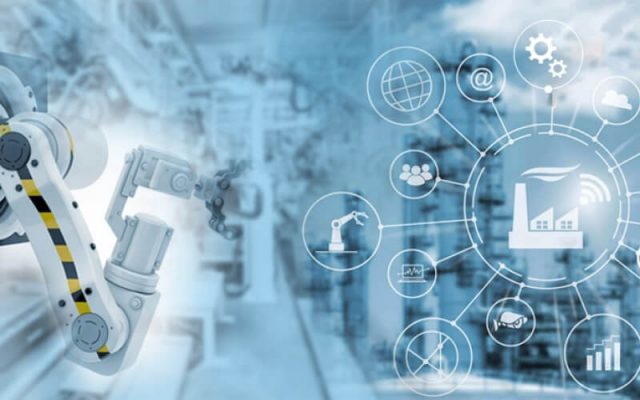Robotic Process Automation (RPA) is a great technology solution in the era of industrial revolution 4.0. It supports people to solve difficult process problems in the enterprise’s automation system. RPA is considered the best software assistant and is trusted by many corporations in different fields such as manufacturing and insurance. The following article will introduce you to the roles of RPA in the manufacturing industry.
Benefits of Robotic Process Automation in the manufacturing industry include
In enterprises, RPA is also known as “digital employee.” Because software robots operate entirely on computers, it helps businesses solve desk jobs, process data quickly and efficiently. Here are some benefits of Robotic Process Automation in manufacturing:
Increase labor productivity
Robotic Process Automation has unlimited working time. It can work 24 hours continuously without rest. Since human emotions do not influence the robot, its performance is always at the highest level. On average, RPA’s job completion time is 2 times faster than that of humans. Therefore, increasing work output is inevitable when businesses apply RPA to their production processes.
In addition, the software robot always works consistently and minimizes manipulation errors. When we have to process a huge amount of data, mistakes are inevitable. But not RPA; they always follow the rules and execute the steps in the automated process sequentially. Therefore, the occurrence of errors is very rare. RPA can work for a long time without any manipulation error. It is not influenced by external factors that affect work performance. Therefore, in the production processes, RPA always does its job well and is highly appreciated by businesses for its level of perfection.
Relieve pressure for employees
Automated robots help relieve work pressure for employees. Because RPA supports them to solve boring, repetitive tasks. We only need to install the process; RPA will remember and perform each step efficiently. Then, employees will be doing more valuable work. They can unleash their creativity and develop their abilities. Businesses will then make the most of the abundant knowledge of manual labor.
Save labor cost
Because Robotic Process Automation has a faster completion time than humans, businesses can completely replace manual labor with RPA. Otherwise, the company will not have to pay RPA allowances. From there, companies will save a lot of costs of hiring manual labor. This money will be transferred to other purposes for maintenance and system upgrade work for RPA.
A business strategy, effective innovation process
The highlight of RPA is its ability to provide important data from collecting information in many different systems. The indicators that RPA provides allow traders to have an overview of their business. At the same time, the software robot also helps the company research competitors, monitor market prices, etc. From there, analysts will have specific strategies to innovate processes to increase labor productivity.

RPA Examples in Manufacturing
Purchase order creation
Order creation requires employees to interact with customers to get order information. Sometimes, during the data entry process, the order creator may enter the wrong information. In addition, for international orders, order creation has also become more difficult. Staff will have to confirm the legal procedures to be able to create a successful application. It will take them a long time to get the job done.
To overcome that situation, businesses have applied RPA to the order creation process. The software robot can quickly browse forms, confirm and enter customer information into the system. Every action of RPA is done according to the process, so you don’t have to worry about customer data accuracy at all.
Inventory management
Inventory management is always a difficult job because employees will have to control the number of products in stock continuously. Changes in delivery: order cancellation, refund, stock release, … will lead to a change in the amount of inventory. Sometimes, employees will not be able to monitor this change thoroughly.
Instead, we can use RPA to perform inventory management functions. The bots will automate email, digitize paperwork, and track inventory levels as they change. For example, the software robot will automatically add it back to the warehouse for a canceled order. From there, management work will be more effective, minimizing warehouse errors.
Vendor communication
Manufacturers must work very hard to be able to contact and communicate with their suppliers. This work takes place daily and is necessary for the purchasing department of the company. For example, tracking the shipping status in the ERP system, sending information to the customer, and closing the OP.
RPA will replace manual labor performing supplier communication work. Here are the steps of the software robot when retrieving orders and updating order status for customers:
Step 1: Open email
Step 2: Read the email text
Step 3: Download the attachments
Step 4: Log in to the company’s ERP system
Step 5: Check inventory availability
Step 6: Determine shipment status tình
Step 7: Answer the customer
Automated robots will streamline the PO process, increase work efficiency and minimize manual manipulation errors.
Some problems in the manufacturing industry and WinActor’s RPA solutions
Some issues in the manufacturing industry
Here are some problems in the manufacturing industry:
- Constantly changing the production process to suit the needs of use
- Inheriting old automated processes is the premise for future scale changes
- Old data needs to be stored carefully
- Forecast of demand for products and services
- Control the amount of inventory
- Increase ROI, solve HR problems
WinActor’s RPA solution
WinActor is the RPA (Robotic Process Automation) solution of NTT DATA – the No. 1 IT Corporation in Japan. This technology was born to allow businesses to solve human resources shortages, cut labor costs, and optimize automation processes. With the application of WinActor in production processes, companies will make the most of the creative knowledge of their employees. That is the premise for the outstanding development of the company in the future.
Conclusion
Above is a summary of the role and benefits of RPA in the manufacturing industry. In the future, software robots will be improved and more complete to suit human use.

WinActor is an RPA software solution by NTT DATA Corporation to help businesses master technology, create breakthroughs in the digital age 4.0.





